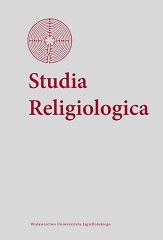Coming Home to Paganism: Theory of Religious Conversion or a Theological Principle?
Coming Home to Paganism: Theory of Religious Conversion or a Theological Principle?
Author(s): Adam Anczyk, Matouš VencálekSubject(s): Christian Theology and Religion
Published by: Wydawnictwo Uniwersytetu Jagiellońskiego
Keywords: Neo-Paganism; Homecoming Hypothesis; Religious Conversion
Summary/Abstract: The so-called “homecoming” is one of the most (if not the most) popular ways of depicting the process of becoming a follower of Neo-Paganism found in literature, from Margot Adler’s classical Drawing Down the Moon (1979) to contemporary authors, like Graham Harvey. It is interesting that “homecoming” simultaneously occurs in Neo-Pagan literature, as the common way of becoming Pagan, seen as opposite to the process of conversion (usually as a rapid change of religious beliefs). The critique of the “homecoming” defined in the academic field concentrates on showing that there is a possibility it may be more a theological notion, rather than a model of religious change to contemporary Paganism. The broad definition of religious conversion, understood as change in religious behaviour and beliefs, does include “homecoming” as one of the possible conversion narratives. Therefore, we may speak of a “coming home experience” as one of the main themes – but certainly not the only one – that is present in the histories of conversion to contemporary Paganism.
Journal: Studia Religiologica. Zeszyty Naukowe Uniwersytetu Jagiellońskiego
- Issue Year: 46/2013
- Issue No: 3
- Page Range: 161-171
- Page Count: 11
- Language: English

